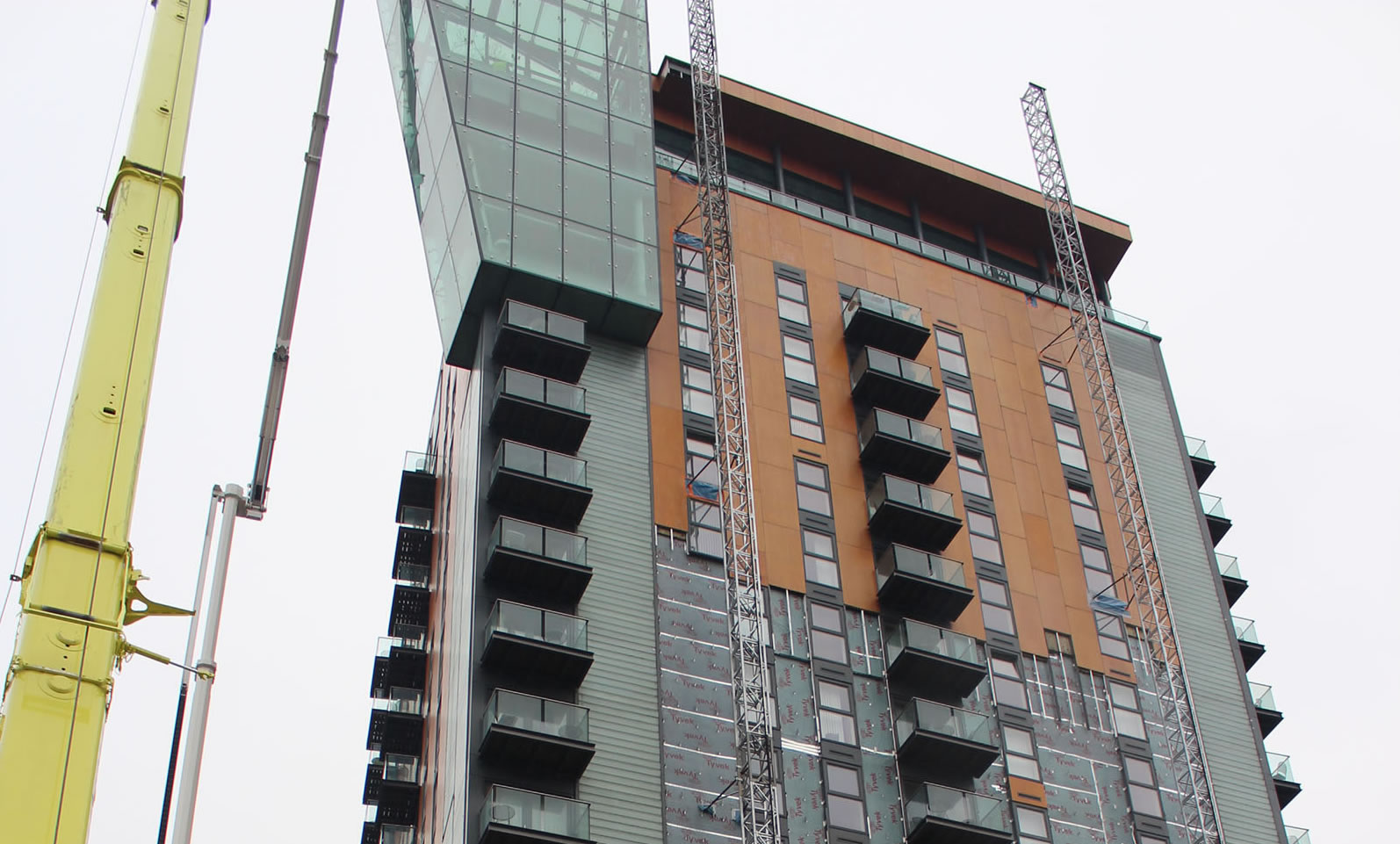The UK building safety regime can be divided into two eras: pre- and post-Grenfell. The disaster, which saw 72 people killed in a high-rise fire, was labelled as the worst UK residential fire since the Blitz of World War II. Over 250 London Fire Brigade firefighters worked through the night to control the blaze, which was fully extinguished after 60 hours.
This deadly structural fire became the subject of numerous complex police investigations; it even prompted the creation of a new government body: the Building Safety Regulator (BSR). The BSR’s job is to enforce new fire safety rules, regulations and reforms, all of which were developed to prevent systemic failures in building construction.Industry practices in the aftermath of Grenfell have changed the regulatory landscape, and today, we’ll be looking at how building regulations for external cladding have evolved almost eight years later.
(The following fire safety rules apply only to England; for regulations specific to Northern Ireland, Scotland or Wales, please consult the regulations of each government body.)
What are the fire safety regulations for those building or refurbishing blocks of flats?
In England, when new flats are being constructed or refurbished, building regulations require that these homes be built to minimise the spread of fire and facilitate the safe evacuation of residents in such cases. The government’s own statutory guidance on fire safety sets out parameters for developers. They state that floors, walls, and ceilings between flats and around escape routes (e.g., corridors, staircases) must be constructed from materials capable of preventing the spread of fire for a specified period (this practice is called ‘compartmentation’).
Any entrances to flats or doors to escape routes should be ‘fire doors’, which are designed to stop the spread of fire for 30 minutes (they also feature self-closing devices and smoke seals). Guidance states that all flats should also have individual fire alarms, but that a communal alarm isn’t typically required. Developers, designers, and builders are responsible for making sure that their work complies with building regulations. While these internal adjustments are extremely important, the changes made to building regulations for external cladding are most closely related to the Grenfell tragedy.
What are the fire safety regulations for unsafe cladding?
The Grenfell Tower Inquiry was officially closed in February 2025. The report, which aimed to identify the cause and origin of the fire and its escape from Flat 16, found that it originated from an electrical fault in a large fridge-freezer.
The report was less concerned with discovering the precise issue in the domestic appliance. Instead, it set out to identity how such a minor fault could lead to a catastrophic loss of life. The investigation found that the principal reason for the fire’s quick spread was due to the presence of the aluminium composite material (ACM) rainscreen panels in the tower’s external cladding.
These findings prompted the release of a joint statement from numerous government departments, which urged owners to inspect their properties against new building regulations for external cladding. If any defects or unsafe cladding are identified, owners are urged to remediate issues or face enforcement action from their local fire and rescue services or local authorities.
How can concerned residents report concerns about external cladding?
If you are concerned that a property is not complying with building regulations for external cladding, there are several ways to report it. The most appropriate method will depend on the height and size of the building.
Concerns about buildings under 18 metres (7 storeys) high
For blocks of flats of any height, including those under 18 metres, your first step should be to report your concerns about fire risks to the ‘responsible person’ for the building. The responsible person is typically the building owner or manager, who is responsible for fire safety in the common areas (like staircases and corridors. If the responsible person does not resolve your concerns about fire risks, you can report them to your local fire and rescue service. The fire and rescue service has the authority to take enforcement action if responsible persons fail to fulfil their duties.
Concerns about high-rise buildings (+18 metres)
For high-rise blocks of flats (defined as being at least 18 metres or seven storeys high), additional reporting channels exist due to new rules introduced following the Grenfell Tower fire. Those who are specifically concerned about high-rise buildings (for instance, if combustible materials were used on the external walls after the 2018 ban on new constructions) should contact the Building Safety Regulator (BSR). The BSR can require developers or building owners to fix non-compliant work.
Do you need cladding installation and replacement?
The Grenfell Tower fire highlighted the major role of cladding materials in fire spread, with ACM cladding identified as ‘the principal reason’ for the rapid spread of flames. Almost 8 years later, compliance with new regulations has never been so important.
If you’re a building owner or the responsible person for a block of flats, and concerns about external cladding have been identified, consider Pops Facades’ comprehensive cladding installation and replacement services.
Having already worked with rainscreen, stone composite, and aluminium cladding, we bring our extensive experience to the table. We only use non-combustible materials to align with new regulations, and our specialist design team are always on hand to work with you.
For more information or to inquire, don’t hesitate to contact us.
